Are you afraid you’ll mess up a meal you cook for the first (or hundredth) time?
Food ain’t cheap, and when you’re a newbie in the kitchen, you might be afraid you’ll have to put a ton of work into something that will be inedible.
And when you bring celebrity chefs into the mix–with their seemingly superhuman ability to whip up amazing meals with little more than their intuition–and you’ve got an intimidating ideal to look up to.
Don’t get me wrong, a lot of cooking can be successfully done with basic equipment and making it up as you go.
But sometimes you’ll want to embrace the science of cooking, instead of the art of cooking, in order to ensure that your food becomes Maximum Tasty, and guarantee that your food is cooked to a safe temperature.
Although (like me) you might want to keep your kitchen as minimalist as possible, a small amount of “scientific gear” will make your meals much tastier, much easier to make, and much cheaper than you might think.
Measuring Volume In the Kitchen
Measuring by volume is the oldest–and cheapest–scientific tool used in the kitchen.
Any crude bowl- or spoon-shaped utensil can be used as a standardized way to measure ingredients, but they have drawbacks as well.
Measuring cups and spoons are best suited for liquids rather than solids.
Since liquids cannot shift around to expand or contract too much, cups and spoons are going to measure the same amount of liquid no matter what.
They are also good for things that you don’t really need precise measurements for. So herbs and spices (and anything that you’d measure with a spoon rather than a cup, really) are ideal candidates for measuring volumetrically.
Where volumetric measuring falls short is basically anything that we would consider “baking.”
Flour-based doughs and batters require a much more precise ratio of ingredients than you’d need for roasting a chicken or braising a pot roast, for example.
But the density of flour is highly variable, and measuring them out by volume can lead to massive differences of how much is actually added, depending on how well it has settled, so I strongly suggest you use another method.
But as I said, volumetric tools are cheap, and useful for more kitchen tasks than you can imagine, so I’d suggest stocking your kitchen with the following as you see fit:
- A 2-cup Pyrex measuring cup for large amounts of liquids.
- A set of measuring cups for medium amounts of liquids and solids that don’t need exact measurements. You really only need one 1-cup measuring cup, but they usually come in sets and you can’t really go wrong with an additional 1/2 and 1/4 cup measuring cups as well.
- A set of measuring spoons for small amounts of solids and liquids. You probably only need a tablespoon and teaspoon, but they usually come in larger sets as well, and you can’t go wrong with one that also contains 1/4 teaspoon, 1/2 teaspoon, and 1/2 tablespoon measuring spoons too.
(Apologies to those of you who don’t use the bizarre imperial units that we do in the States. Feel free to use whatever common measuring cups and spoons you can get. Again, these are used for ballpark estimates, so you don’t need exact measurements.)
I would strongly suggest you get metal measuring spoons and cups with the size of the cup etched in.
Every plastic set I’ve ever had the measurement size printed on it slowly rubbed off, making the measuring instruments both difficult to tell apart and kinda gross to use.
Measuring Weight In the Kitchen
Using a scale in the kitchen is a more recent development than using measuring cups, but is far more useful in many cases.
As I mentioned before, baking is far more sensitive to changes in the ratios of the ingredients, so a scale is essential for making bread, pies, biscuits, cookies, and cakes.
That being said, you really shouldn’t be learning how to bake until you’ve learned more basic kitchen skills such as braising, roasting, and frying.
Baking is a fussy endeavor, and one that’s more likely to turn a beginner off in the kitchen than learning how to fry pork chops, boil greens, and steam rice.
So if you’re looking to reach the jedi level of home cooking, go ahead and buy a scale. But if you’re still mastering the basics, hold off on diving into baking for later.
(Oh, if you are a coffee geek you’ll want a scale to measure out your water and coffee grounds. Trust me.)
Like measuring cups and spoons, most kitchen scales will do the trick. I’d suggest you look for the following features:
- Ability to weigh at least five pounds (but ideally ten).
- Ability to change units from ounces to grams.
- Displays numbers in decimals rather than fractions.
A good kitchen scale will allow you to have far more consistent results when baking.
Measuring Temperature In the Kitchen
Unlike measuring by volume or by weight, you use temperature to determine when your food is done rather than measuring ingredients.
By using a thermometer, you can be sure that your food is both:
- Neither over- nor undercooked, but optimally cooked for texture.
- Heated to a temperature that would kill off any pathogens.
I avoided getting a thermometer for a long time, and even then, I got a really cheap one.
After all, there’s tons of info out there on how to tell if your chicken, steak, or rib roast is cooked all the way through, from timing it to touching it.
But after I bought my first good thermometer, the quality of my cooking drastically increased, and I haven’t overcooked or undercooked a single thing since.
The benefit of thermometers is mostly in cooking meat, where the temperature difference between too low to be safe and too high to be tender and juicy is so close together.
By using a thermometer, you can rest easy knowing that you’ll always get your meat into the “safe and tasty” zone.
But do yourself a favor and steer clear of the basic thermometers you see everywhere. Not only are they extremely inaccurate, but they are generally not ideal for leaving in meat during long cooking times.
Make the first thermometer you buy a digital probe thermometer.
This thermometer has a probe connected by a long, heat resistant cord. So the display can be kept outside the oven where it can be easily read (and it’s more accurate to boot).
It will also ideally allow you to set an alarm for when the food thermometer reaches a certain point, so you don’t have to keep checking it.
This type of thermometer can also be used for cooking thin cuts of meat such as steaks and pork chops using the “reverse sear” method.
By cooking these meats at a low temperature with a probe inserted you can heat the inside of the cut uniformly to a temperature just below optimum.
Then, you can remove the probe and sear the meat on both sides in a scorching hot pan.
If you like to grill, I would strongly suggest getting a model with two probes, one to use to monitor the temperature of your meat, and one to monitor the temperature inside your grill.
Once you start to get a bit more geeky with cooking, you’ll want to add an instant-read digital thermometer to your arsenal as well.
As great as probe thermometers are, they have a few big disadvantages:
- They take a long time to equilibrate, so they really need to remain in your food as it cooks.
- Since they sit in your food and are metal, they can actually end up conducting heat, giving you a slightly off reading.
- They aren’t quite precise enough to get food that consistently rates an A+.
Once you want to take things to the next level, an instant-read thermometer can take you there, and the model you’ll want to buy is undoubtedly the Thermapen.
An instant read thermometer is super-accurate, and since it only takes a couple seconds to equilibrate, they are ideal for checking foods for doneness in multiple places, or quickly seeing if a food cooking over high heat is done before burning it.
I know how tempting it may be to skip getting a thermometer, but if there’s one thing in this article that’s going to improve your cooking the most, it’s a probe thermometer.
The truly geeky can get a Thermapen later.
Measuring Time In the Kitchen
Like measuring by volume, measuring by time is one of the oldest methods of bringing science into the kitchen, but it’s the one that you almost certainly won’t need to buy any gadgets in order to take advantage of.
Hitting just the right temperature is crucial when cooking meat, but much less so when cooking vegetables, eggs, ribs, or baked goods.
Punching a thermometer into these foods can make the food look ugly, or it may completely worthless. Either way, getting a precise temperature can be an exercise in futility.
Fortunately, if you are using a precise oven setting (or a calibrated grill), timing your cooking can be a super-easy way of ensuring it has achieved the proper doneness.
Sure, you can buy a kitchen timer, but don’t you have one on your oven already? Don’t you have a phone with timer capabilities. And if you have a probe thermometer, doesn’t it time as well?
Timing is a cheap and crude scientific strategy to deploy in the kitchen, but it can be extremely effective.
She Blinded Me With Science
It’s easy to romanticize the image of the chef who does every thing by instinct.
He knows just how much ingredients to add, how long to cook it, and the exact moment that it’s done.
But we mere mortals are different, and there’s no need to bash our heads against the wall while we consistently ruin dishes that could have been saved with just a bit of science.
So here’s your action plan:
- No matter what, get yourself a probe thermometer. Your meat will taste better than it ever has before, and you can even use it to monitor your grill temperature or use it to time cooking.
- Once you start to dabble in baking and/or trying out more exotic herbs and spices than just salt and pepper, get yourself a set of metal measuring spoons, a set of measuring cups, and a Pyrex liquid measuring cup.
- When you start baking (or if you want to start making perfect coffee), get yourself a scale.
- When you want to get super-precise about your temperature-taking, whether grilling the perfect steak or brewing the perfect cup of coffee (we’re talking jedi-level home cooking here), then get an instant-read thermometer too.
It might shatter your image of becoming a modern incarnation of an old-country chef, but the dramatic increase in food quality you’ll get by bringing science into the kitchen will make you realize that you’re better off that way.
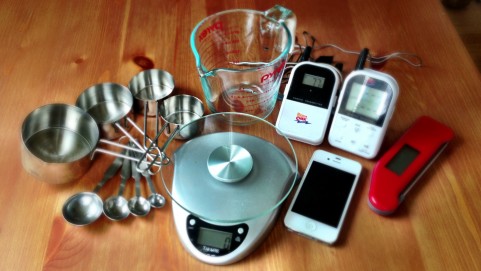
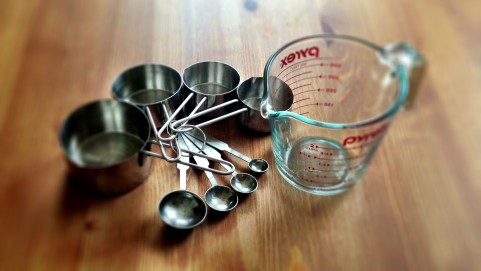
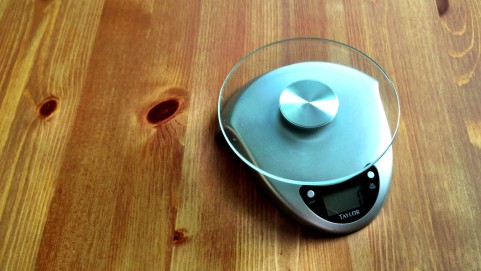
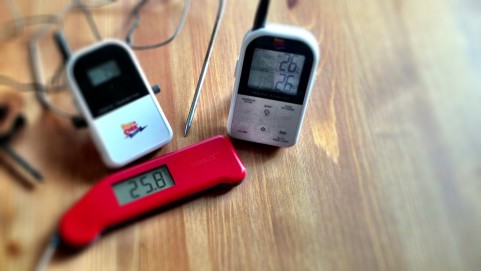
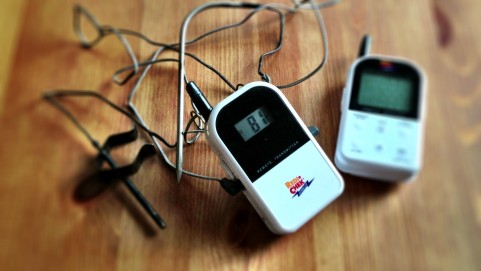
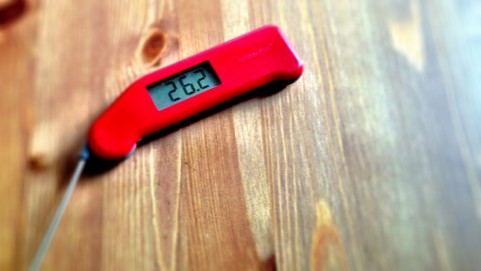
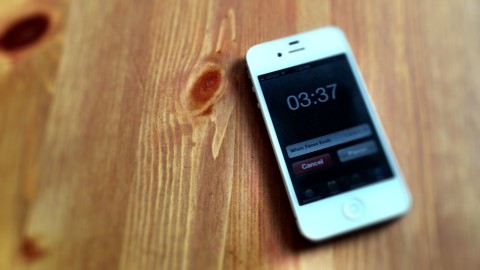
 I'm a science geek, food lover, and wannabe surfer.
I'm a science geek, food lover, and wannabe surfer.
Comments on this entry are closed.